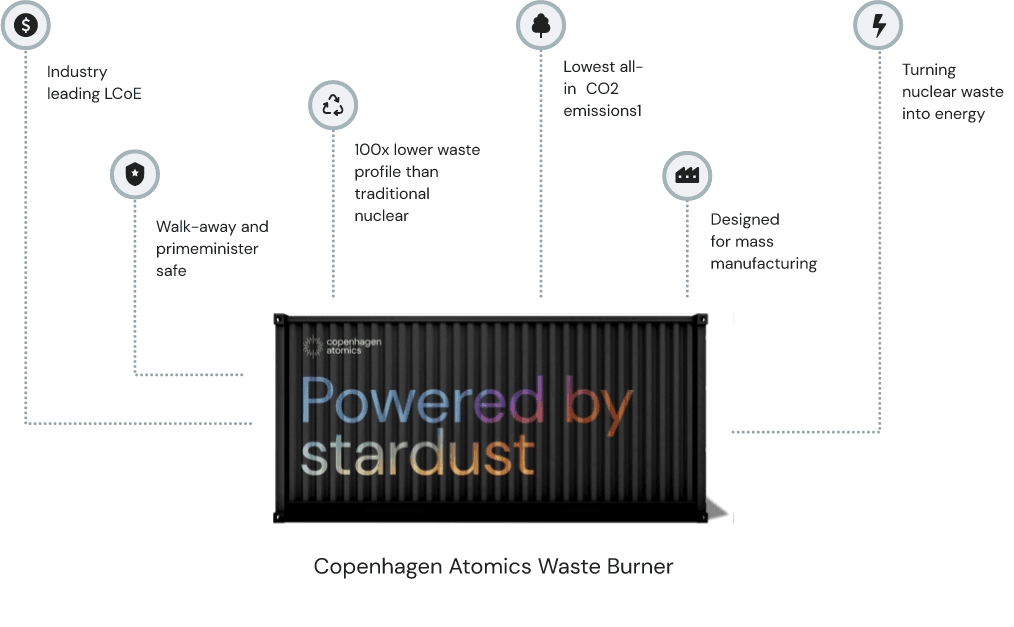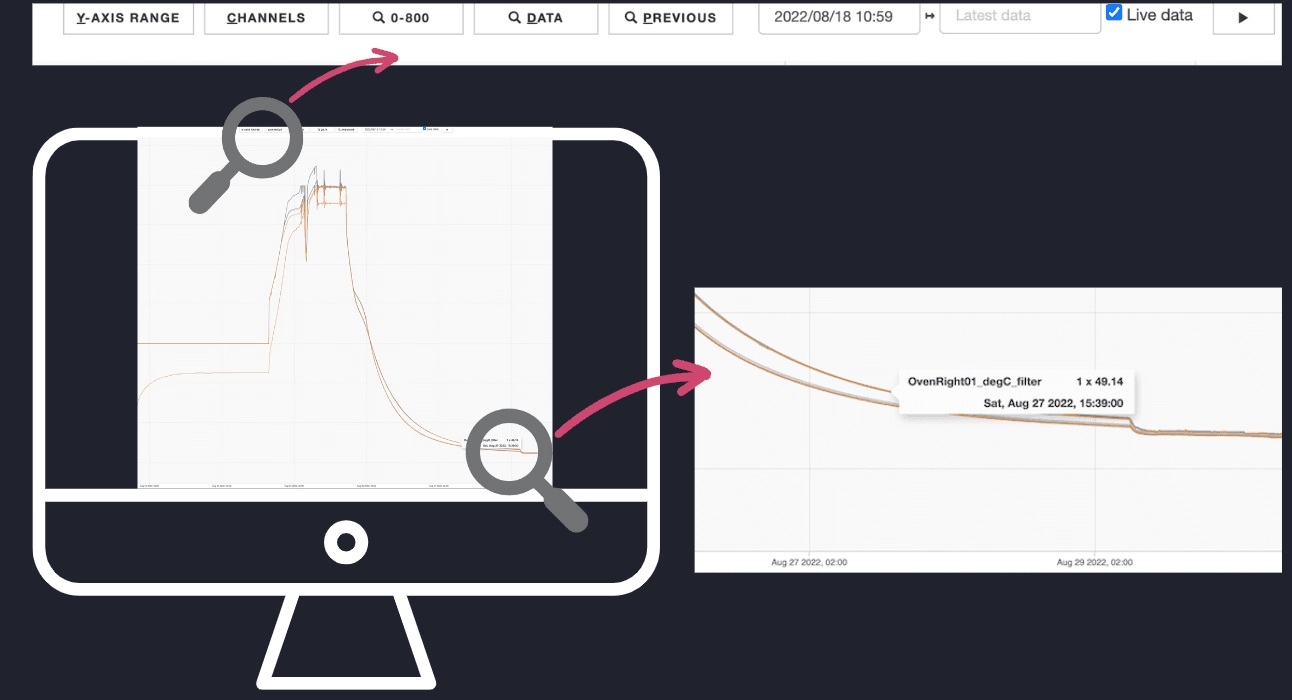Case Study
Copenhagen Atomics trusts QuestDB for real-time monitoring
Copenhagen Atomics, manufacturer of next generation molten salt reactors, uses QuestDB to monitor their thorium reactors in real time.
- Optimised SQL query performance
- Efficient SQL queries for real-time monitoring.
- High Throughput
- High-throughput ingestion with official client libraries.
- Scalable Infrastructure
- Deployment on Azure using Kubernetes Helm chart.

- Avg ingested rows/sec
- 3M+
- Write speed vs InfluxDB
- 10x
- Compression ratio
- 6x
- Cloud up-time
- 99.99999%

Advanced Reactor Monitoring
Copenhagen Atomics
Copenhagen Atomics uses QuestDB for real-time monitoring of their next-generation molten salt reactors. QuestDB provides the reliable and efficient data infrastructure needed for efficient reactor monitoring and anomaly detection.
- Anomaly Detection
- Monitor IoT sensors in real-time with QuestDB.
SELECTtimestamp,AVG(aircon) AS aircon,AVG(ac01_temperature) AS ac01_temperature,AVG(dc01_temperature) AS dc01_temperatureFROM'loop'WHEREtimestamp BETWEEN'2022-08-26T07:16:15.104Z'AND '2022-08-26T08:01:15.104Z'SAMPLE BY 1sFILL(LINEAR)
Real-Time Reactor Monitoring
High-Throughput Queries for Safety and Efficiency
Copenhagen Atomics monitors their reactors in real-time with QuestDB. The following query is used to aggregate sensor data over time.
Reactor Monitoring
Optimized for Safety and Efficiency
Copenhagen Atomics relies on QuestDB for real-time monitoring of their reactors.

- IoT Sensor Monitoring
- Real-time IoT sensor monitoring for anomaly detection.
- Community Support
- Active and supportive open source community.
- Efficient Architecture
- Massive throughput with minimal hardware.

"QuestDB was our choice for real time data due to high performance, open source, high flexibility and great support. Performance was significantly better than the competition and we believe that QuestDB will become market leading."
Secure and Efficient Architecture
Copenhagen Atomics relies on QuestDB
Time-series data requires specialized handling - especially when nuclear power is involved! QuestDB provides the performance and reliability needed for secure, efficient monitoring of nuclear reactors in real-time.
